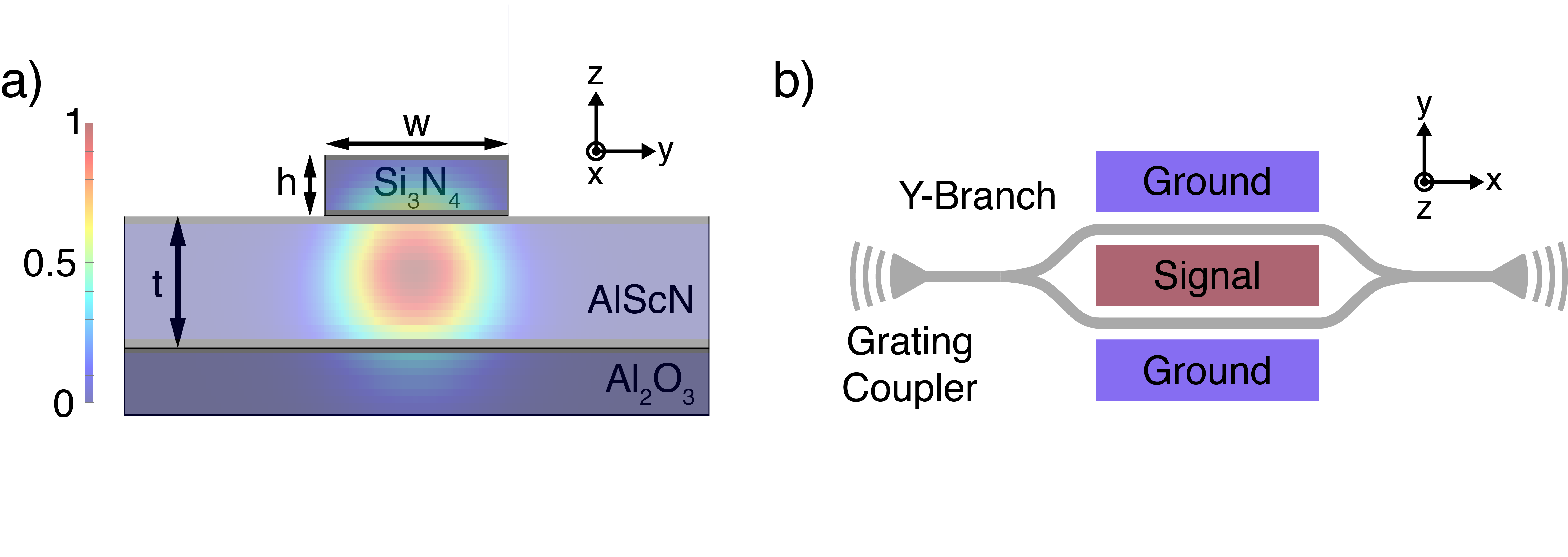An on-chip nonlinear optical device that uses AlScN films to undergo scalable manufacturing processes
Problem:
Nonlinear photonics is a growing field that uses chip-sized devices to control light signals. These devices are used in telecommunications, biosensing, and quantum computing. For known nonlinear materials, there are few options for affordable, large-scale production of nonlinear photonic devices because many are either too weak, or not compatible with CMOS processing, the primary fabrication process used in modern-day electronics. As a result, there is a need for new nonlinear materials that can be used in scalable CMOS processes.
Solution:
This technology uses aluminum scandium nitride (AlScN) films as a nonlinear material to make efficient CMOS-compatible photonic devices. Because most contemporary microchips are fabricated using CMOS processes, devices designed with CMOS-compatible AlScN films can be made in the same environment, lowering production costs.
Technology Overview:
AlScN exhibits stronger second-order optical nonlinearity than currently used materials, such as AlN. It can also be grown directly on CMOS devices due to its low sputtering temperature. The CMOS-compatibility of AlScN makes it a viable candidate to interface with silicon photonic devices as a strongly nonlinear material. In a proposed photonic device design, silicon nitride is used to define a waveguide and ring resonator structure on top of an AlScN film. When interfaced with electrical devices, the optical resonance shifts, enabling electro-optic modulation.
Advantages:
- Highly scalable and easy to interface with silicon photonic devices due to its CMOS-compatibility
- Can be used to make efficient electro-modulators as it exhibits a second-order optical nonlinearity 12 times higher than other CMOS-compatible nonlinear materials such as AlN and 2 times higher than other strongly nonlinear materials such as lithium niobate (LN)

Initial design of an electro-optic modulator that uses AlScN as its nonlinear material. The ring resonator is able to take incoming light signals and change their properties such as frequency, amplitude, and wavelength. Image a) shows the optical waveguide structure made using silicon nitride on top of AlScN, b) shows the pattern of electrodes on top of the ring resonator.
Case ID:
21-9762-tpNCS
Web Published:
10/21/2021
Patent Information:
| App Type |
Country |
Serial No. |
Patent No. |
File Date |
Issued Date |
Expire Date |